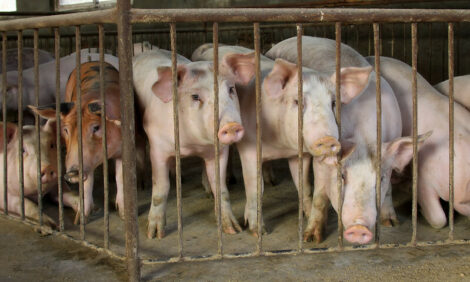CME: WASDE Contained Few Big Surprises
US - USDA’s monthly Crop Production and World Supply
and Demand Estimates reports, released Tuesday morning
contained few big surprises but even the smaller surprises
pressured grain futures prices in Tuesday’s session, write Steve Meyer and Len Steiner.
This is
not the time of year that we normally see big changes in USDA’s
U.S. crop supply and utilization (S & U) estimates and this year held
true to form. The table at right shows historical and pre-report estimates for projected year-end stocks of U.S. corn, soybeans and
wheat as well as yesterday’s USDA estimates.
USDA left its projected 2011-12 corn carryout figure at 801
million bushels, nearly 12% larger than the average trade estimate.
The steady carryout estimate was easy to arrive at since USDA
changed no numbers at all in its April S & U table vs. March levels
(see page 2). The 6.3% estimated year-end stocks-to-use ration
remains the second lowest on record. USDA did narrow the range
of its estimate of national weighted average farm price to $6.00 to
$6.40. The mid-point of the range, $6.20, is the same as it was in
March.
USDA reduced its estimated carryout stocks for soybeans
by 9.1% to 250 million bushels. That figure was very close the average analysts’ estimate of 246 million bushels. The change was
the result of higher estimated crushings (+15 mil. bu.) and exports
(+25 mil. bu) and small reductions in seed usage and residual. The
250 million bushels amount to 8.2% of total 2011-12 usage, down
from 9.1% in the March report. USDA increased its estimated national weighted average farm price to $12.00 to $12.50 from
March’s $11.40-$12.60. Both bean oil and bean meal price estimates were increased as well with the mid-point of the oil range
going from $52.50 to $53.50 and the mid-point of the meal range
jumping $20/ton to $345.
Year-end wheat stocks were also reduced very much in
line with analysts’ expectations. USDA’s estimated 793 million
bushel carryout was only 3 million lower than the average of analysts’ estimates and represents a 3.9% reduction from March’s
USDA estimate of 825 million bushels. The reduction was driven
by a 35 million bushel increase in projected feed usage and leaves
year-end stocks-to-use ratio at 36.2%, very close to last year’s
35.7%. USDA narrowed its estimated all-wheat price range to
$7.20 to $7.40/bu., leaving the mid-point steady at $7.30.
Estimates of Argentina’s and Brazil’s corn and soybean crops were very much in line with analysts’ pre-report
expectations. USDA reduced its estimate of Argentinian corn output from 22 million metric tons (mmt) in March to 21.5 mmt in this
report. That number is the same as the average estimates from
both Reuters’ and DowJones surveys. USDA left its estimate of
Brazil’s corn crop steady at 62 mmt, slightly larger than the 61.7
and 61.8 mmt average estimates of the two wire service surveys.
Argentinas estimated soybean crop was reducte from 46.5 mmt in
March to 45 mmt in this report. That is slightly lower than pre-report
estimates of 45.2 and 45.3 mmt. Brazil’s estimated soybean crop
declined from 68.5 mmt to 66 mmt in this report, about one million
mt lower than the pre-report estimates.
This week’s Crop Progress report indicates, as expected, that the pace of corn planting accelerated last week
versus both year-ago and historical levels. Corn producers had
planted 7% of planned corn acres as of Sunday. That compares to
3% last week and last year and a 5-year average of 2%. But just as
was the case a week ago, we think the importance is where those
acres are located. Perennial early-plant leader Texas is about on
schedule (52% vs.. 5-yr. average of 54%) and southern states such
as Tennessee, North Carolina and Kentucky are well ahead of
schedule, too. But the big story is large plantings in Illinois (17% vs.
5-yr. avg of 1%), Indiana (6% vs. 0%), Missouri (23% vs. 6%). Iowa
and Minnesota even made the table this week at 1%.
Intended acres and early planting, however, will all fall
aside as the year progress and this corn crop and resulting prices
will boil down to one variable: yield. A yield like last year’s !47 will
still leave 2013 carryout stocks VERY tight. A trend yield of 159 or
164 (depending on which trend you choose) would push carryout
stocks well over 1 billion bushels and likely push prices well down in
the $5 range and perhaps below. Can we have three below-trend
yields in a row? It has happened three times since 1960 with the
last occurring in 1995-1997. Not likely but certainly possible.
Further Reading
Further Reading












